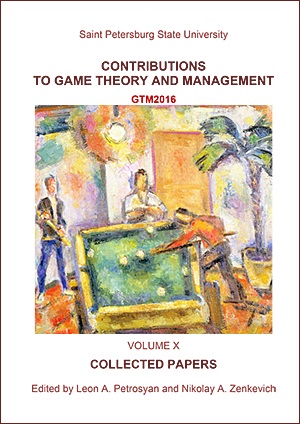Static Game Theoretic Models of Coordination of Private and Public Interests in Economic Systems
Abstract
A problem of inefficiency of equilibria (system compatibility) in static game theoretic models of resource allocation is investigated. It is shown that the system compatibility in such models is possible if and only if all agents are individualists or collectivists. Administrative and economic control mechanisms providing the system compatibility are analyzed.
Keywords:
coordination of interests, hierarchical games, public goods economy, resource allocation
Downloads
References
Downloads
Published
How to Cite
Issue
Section
License
Articles of "Contributions to Game Theory and Management" are open access distributed under the terms of the License Agreement with Saint Petersburg State University, which permits to the authors unrestricted distribution and self-archiving free of charge.




